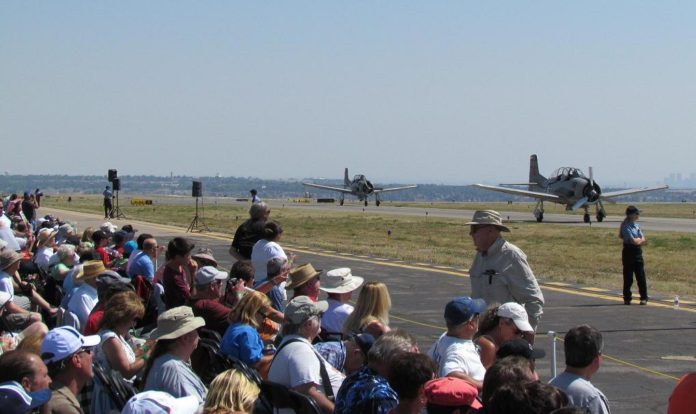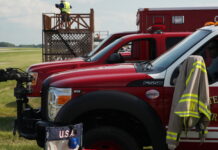Early this year, before the 2016 air show season had begun, an ICAS member shared with me his opinion that air shows are the most unique form of entertainment in the world. He said it matter-of-factly. Actually, he said it as the premise of an entirely different point.
It’s true, of course. Among large-scale spectator events, there’s nothing even remotely like an air show. Not professional sports or auto racing. Not music concerts or amusement parks. Not street festivals or parades. Every year, we provide an affordable, outdoor, family-oriented, aviation-based entertainment experience to millions of people throughout North America and all over the world.
Whether it’s a small event with a few local performers or a mega-air show with many hours of flying and hundreds of thousands of spectators, we offer a form of entertainment that also leaves a lasting impression. I attended my first air show in September of 1974 as a 13-year-old boy. I’ve attended more than 150 air shows since then, but I can remember every detail of my first air show…how exciting it was to watch the pilots fly those aircraft and how fortunate I felt to be there on that day. And, as an industry, we offer those kinds of experiences to – literally – millions of people every year at hundreds of locations all over the globe.
This observation by that ICAS member about the distinct nature of our events has been ringing in my ears for the last several weeks…as I’m driving alone in the car, drifting off to sleep or otherwise letting my mind wander. And, sadly, it’s been bumping around in my head this spring as I’ve traveled to three different memorial services in Georgia, Florida, and Massachusetts.
It’s quite a contrast: the exhilarating, inspiring nature of this special type of aerial entertainment juxtaposed against the dangerous and unforgiving nature of our business and the tragic toll it has taken throughout the 100-year history of air shows. I’d be lying if I didn’t admit that – for a time — this spring’s accidents had left me a bit rattled.
Here’s where I have landed.
The men and women who participate in this unique form of aerial entertainment do so with their eyes wide open. They work hard to identify and mitigate risk. And, as an industry, we support them with a wide range of safety programming designed to further reduce the danger of air show flying. Individual performers should learn what they can from these most recent accidents and take proactive steps to avoid the tragedies experienced by those three pilots this spring…not because they are required to do so or because government officials create new regulations, but because it’s the thoughtful, professional thing to do.
Here at ICAS, we will continue to do everything we can to support those efforts. We – all of us – have made genuine, measurable progress in this regard during the last ten years, and that work will never end. The stakes are too high and the consequences too severe to do otherwise.
But I also believe that all of us have a responsibility to those performers who take these risks to pursue excellence in all areas of air show operations and management, not just safety.
For example, I believe that, as an industry, we owe it to new performers to provide them with opportunities to demonstrate their skills and acquire the experience required to become successful in our business. The future of our industry depends on our collective ability to attract and retain talented new performers. And, to many of them, the air show business looks like a closed shop that requires a decade or more to break into. They deserve better than that.
I also believe that our air show community should be more welcoming to new ideas, new vendors and new approaches to what we do and how we do it. Our industry has a growing reputation for being resistant to change and inhospitable to outsiders. That makes it more difficult to continuously improve and it drives away individuals and organizations that might be good for the business. Experimenting with new ideas can sometimes be uncomfortable or even intimidating, but it’s a necessary step in forward progress.
To encourage continuous improvement, “good enough” should not be good enough. I spent a day at the Lynchburg (Virginia) Regional Air Show in May and learned about a new technology-based program to improve public safety at the event. The Lynchburg group improved this aspect of their air show not in response to a particular problem, but because they knew there was room for improvement.
Event organizers all over North America are experimenting and innovating with complementary programming to improve attendance and make their events more valuable to their communities. The organizers of the California Capital Air Show have introduced exciting new Science, Technology, Engineering and Math (STEM) programming to their event, not because they had to, but because they saw an opportunity to better serve the community in which their event is held. Other shows have held 10K running races on the airport runway, barbecue cook-offs and car shows to make their events more broadly appealing to the public. These kinds of initiatives improve air shows and help to make them more attractive and sustainable.
At the national level, ICAS, its staff, its leadership and its members must continuously challenge themselves to put the organization to better use in promoting air shows, advocating on behalf of the industry, educating members, professionalizing the business, and taking positive, practical steps to improve the environment in which air shows are planned and conducted in North America. That’s why the ICAS Board embarked on an ambitious strategic planning initiative two years ago. And it’s why the ICAS and ICAS Foundation Boards of Directors have committed themselves to building a new and mutually beneficial relationship that provides benefits to the entire air show community.
For me, this is the only way it makes sense. We – the entire air show community – owe it to everybody involved in our business, every spectator that attends one of our events, and every community that hosts an air show to maintain laser-like focus on improving safety. But we must also be equally committed to building, sustaining and enhancing the air show business in a way that is worthy of the risks shouldered by our performers every time they strap in to practice or perform.








